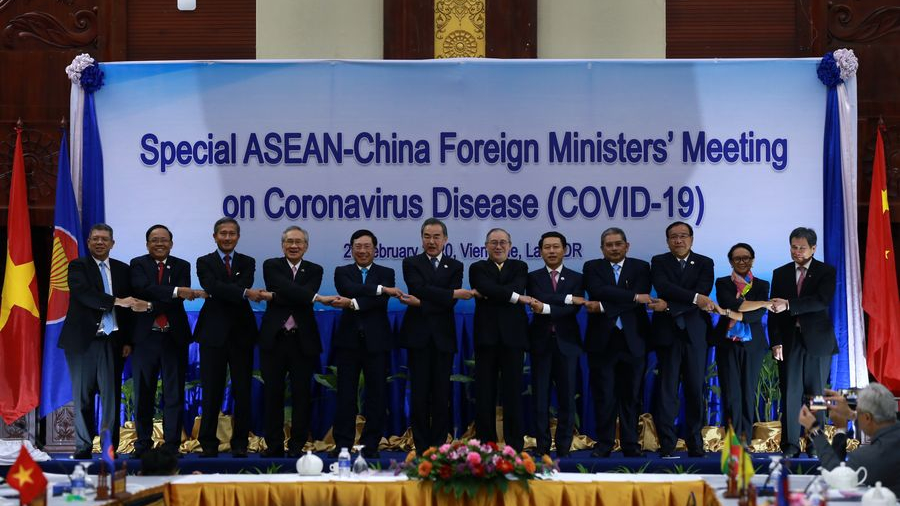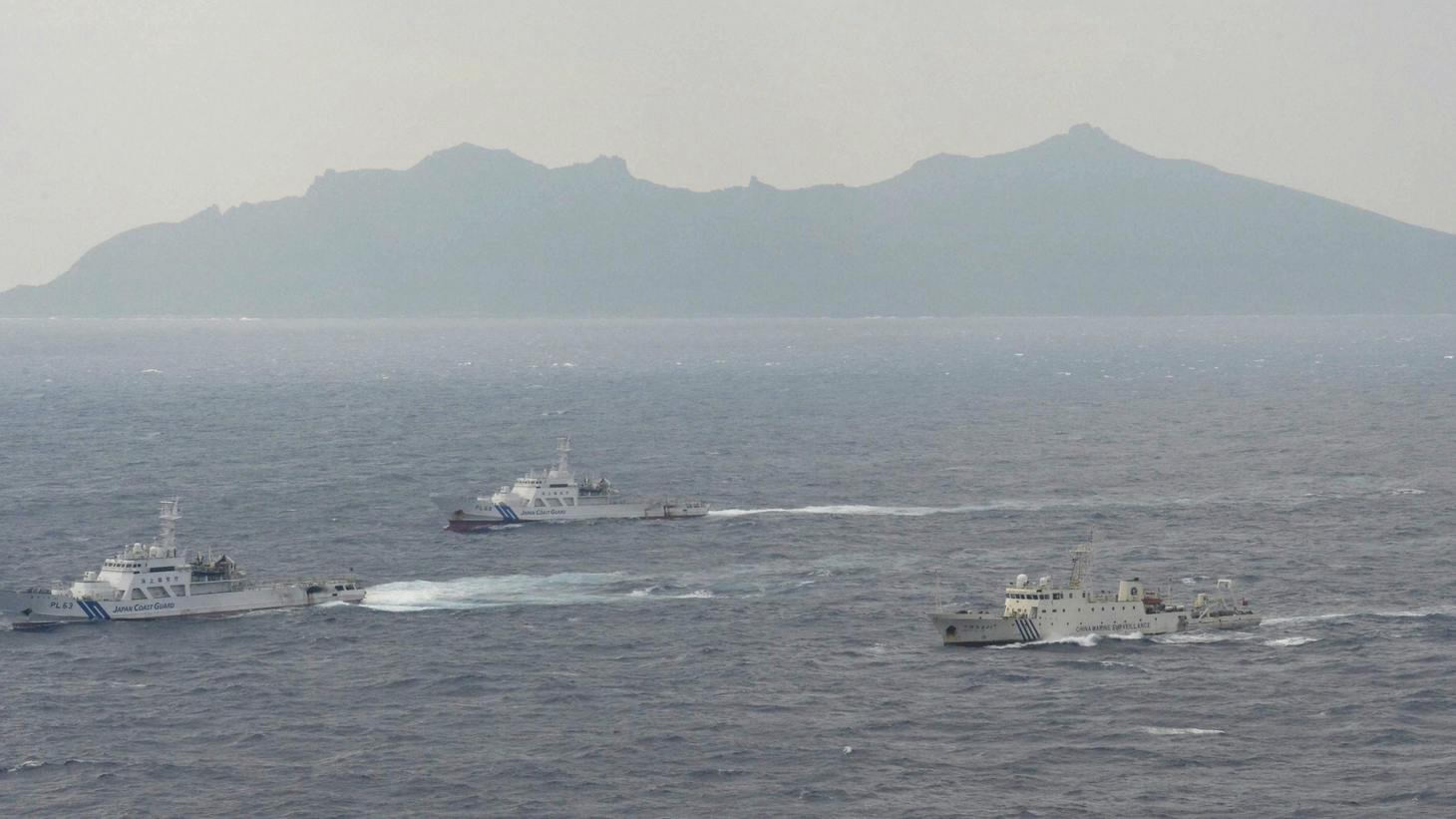
Chinese State Councilor and Foreign Minister Wang Yi (L6) and foreign ministers of ASEAN countries attend the Special ASEAN-China Foreign Ministers' Meeting on Coronavirus Disease in Vientiane, Laos, February 20, 2020. /Xinhua
Chinese State Councilor and Foreign Minister Wang Yi (L6) and foreign ministers of ASEAN countries attend the Special ASEAN-China Foreign Ministers' Meeting on Coronavirus Disease in Vientiane, Laos, February 20, 2020. /Xinhua
Editor's note: Ken Moak taught economic theory, public policy and globalization at the university level for 33 years. He co-authored a book "China's Economic Rise and Its Global Impact" in 2015. The article reflects the author's opinions, and not necessarily the views of CGTN.
At the 19th virtual ASEAN Economic Ministers Meeting (AEM), participants rightly agreed that economic partnership is the best way going forward in the post-pandemic recovery as confrontation or siding with the U.S. against China has gained nothing but grief. For example, the Philippines suing China at the Permanent Court of Arbitration rewarded the plaintiff nothing but an empty victory and a hefty legal bill of over 30 million U.S. dollars.
Territorial disputes have added economic and security risks for countries in the Asia Pacific region. The issues are more complicated than the West has led the world to believe. China did not invent the "Nine Dash Line." The country was also exempted from UNCLOS (United Nations Convention on the Law of the Sea) provision of erasing all historical claims on territories outside of a country's 200-mile economic zone as a condition for it signing onto the law.
However, the U.S., Japan and their media twisted the narrative, ignoring history, and inventing excuses to blame China for the conflicts in the South and East China seas. Not only did they not mention the historical events that led to China's claims, the U.S. and Japan instituted the "pivot" to Asia posture and bought the Diaoyu Island from "Japanese owners" in 2012.
China responded by building islands within the Nine Dash Line in the South China Sea and hardening its position on claiming the Diaoyu Island. As predicted, the U.S. and Japan used the Chinese responses as an excuse to accuse it of being a "bully" or modern-day imperialist.
Since then, the South and East China seas territorial disputes become increasingly heated, turning the waters into a "flashpoint" for "big power" competition between the U.S. and China. This put the ASEAN claimants in a difficult position, unable to choose sides between them – China is important to their economic well-being but U.S. pressure prevents them from befriending with Beijing.

A Chinese marine surveillance vessel near the Diaoyu Islands in the East China Sea on September 24, 2012. /VCG
A Chinese marine surveillance vessel near the Diaoyu Islands in the East China Sea on September 24, 2012. /VCG
Despite the above, trade and investment between China and ASEAN continues to flourish, growing from around 43 billion U.S. dollars in 2002, the year the ASEAN-China Free Trade Agreement was signed, to a whopping 644 billion U.S. dollars in 2019. Moreover, the Southeast Asian club and China became each other's biggest trade partner in the first quarter of this year.
China's quick recovery from the pandemic – 3.2 percent growth in the second quarter – reinforced the ASEAN's cooperative stance. The International Monetary Fund (IMF) and other organizations predicted that China would be the only major economy to enjoy positive growth this year, thus adding optimism that the Joint Statement on Enhancing Cooperation under the Free Trade Area and Combating COVID-19 (JSEC) issued by the ASEAN and China is "deliverable."
Trade and investment prospects for ASEAN promised to be even better with China's recovery programs at home and the progress of the BRI (Belt and Road Initiative) projects. Building more infrastructures and designating consumption as engines of economic growth and recovery at home and abroad would almost guarantee additional Chinese investment in and imports from ASEAN in the post-pandemic period.
The two economies are highly complementary in that ASEAN exports mostly commodities and foodstuffs to and imports finished manufacturing goods from China. In addition, as the U.S., the EU and Japanese economies are facing increasingly strong headwinds during the pandemic, cooperation with China could help the ASEAN to recover from the COVID-19-induced recession. Moreover, on curbing the virus, there is no better partner than China, in light of its effective lockdown measures and experiences in combating infectious diseases.
Confrontation or joining the U.S. to contain China will only harm the ASEAN countries' national interests and put their security at risk.
(If you want to contribute and have specific expertise, please contact us at opinions@cgtn.com.)